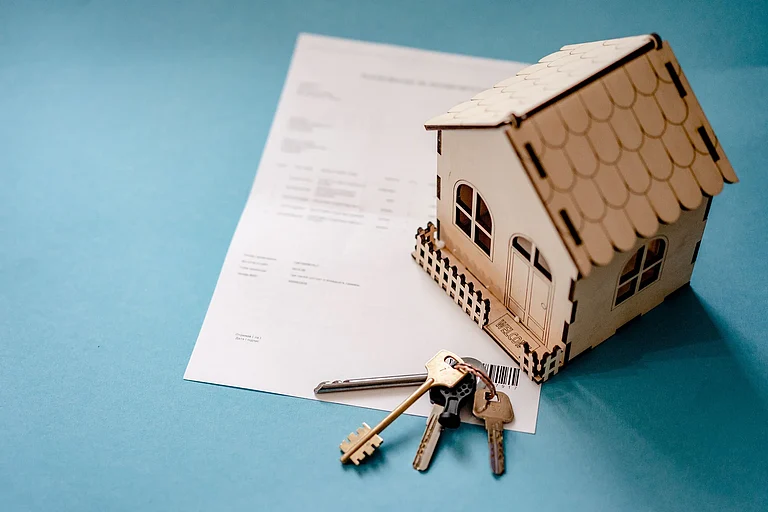All regulated entities (REs) offering EMI-based personal loans must provide borrowers with the flexibility to switch from floating rates to fixed rates and vice versa after paying a fee, according to the Reserve Bank of India (RBI) frequently asked questions (FAQs). This applies to home loan borrowers as well, since the RBI's definition of equated monthly installments (EMI) based personal loans includes loans taken to create or enhance immovable assets.
“REs have to mandatorily offer fixed interest rate products in all equated installment-based personal loan categories. As stated in paragraph 2 (ii) of the circular, REs shall provide the option to the borrowers to switch over to a fixed rate as per their Board approved policy at the time of reset of interest rates,” reads the circular.
It also says that the circular intends to allow the customer flexibility to switch from a floating-rate loan to a fixed-rate loan or vice versa, subject to applicable charges. Under its board-approved policy, the RE is required to specify the number of times a borrower will be allowed to exercise the switch option during the loan's tenure. The circular is also applicable to existing borrowers.
What It Means
Floating rates, which fluctuate with market conditions, can lower your EMIs when interest rates fall. However, they require you to be prepared for potential rate hikes. On the other hand, fixed rates provide stability and consistent payments, making them a good choice for borrowers who prefer certainty. That said, fixed rates don’t allow you to benefit if interest rates decrease. Also, fixed rates are available only for a certain tenure, say one to five years, and not for the entire period of the loan. When the period ends the loan changes to a floating rate loan.
Costs Involved
The circular also says that “RE can levy applicable charges for switching of loans from floating to fixed rate or vice versa and/ or any other service charges/ administrative costs incidental to the exercise of the switchover options and the same shall be transparently disclosed in the sanction letter and also, at the time of revision of such charges/ costs by the RE.”
The cost implications of switching between loan rates vary according to the lender. In India, the switching typically includes a conversion fee ranging from 0.25 per cent to two per cent of the outstanding loan amount, plus processing fees and documentation charges. “These costs need to be carefully weighed against the potential interest savings from switching, considering factors like the remaining loan tenure and the difference between current fixed and floating rates. Borrowers should calculate the break-even period to determine if the switch is financially beneficial,” says Samanta.
What You Should Choose
In both cases, carefully evaluate how the choice impacts your EMI structure and the proportion of interest versus principal in your payments over time. Hence when deciding between floating and fixed home loan rates, consider your risk tolerance, financial stability, loan tenure, and the outlook for interest rates to ensure your decision aligns with your long-term financial goals.
“A home loan borrower should consider switching from a floating to a fixed rate when interest rates are expected to rise significantly or during periods of high market volatility, as this protects against future rate increases. Conversely, switching from fixed to floating rates makes sense when interest rates are projected to decline and the borrower wants to take advantage of potentially lower rates, or when they have a strong financial position and can absorb some interest rate risk in exchange for possibly lower overall costs,” says Dipak Samanta, executive director, Urban Money, a tech-enabled loan platform.
When Floating Rate Makes Sense
For borrowers nearing the end of their loan tenure, floating rates typically offer more advantages. The impact of rate fluctuations on the overall interest outgo is limited due to the shorter remaining period. Additionally, the conversion costs associated with switching to a fixed rate might outweigh potential benefits when spread over a shorter tenure. The reduced risk exposure due to the smaller outstanding principal also makes floating rates more manageable for these borrowers.
If your loan is currently on a fixed rate and nearing its end, it’s important to evaluate whether switching to a floating rate is worthwhile. However, it’s crucial to compare your fixed rate with prevailing floating rates and consider the associated conversion charges.
When Fixed Rate Makes Sense
As a rule, fixed-rate loans are more expensive than floating-rate loans by 50 to 300 basis points or more. For example, as of January 10, Axis Bank was offering a fixed rate of 14 per cent and a floating rate of 8.75 to 9.65 per cent.
If you are at the lowest possible rate on your loan during a low-interest cycle period, you can consider moving to a fixed loan.
“If the rate is not much higher than your existing rate and is expected to hold for the rest of your loan duration, then the higher rate may still compensate for the years of higher interest and bring down the overall cost of your loan. However, if the loan is only semi-fixed and bound to reset in a few years, or if you have plans to prepay and close your loan earlier, then it is best to stick to the floating rates,” says Adhil Shetty, CEO, BankBazaar.com, an online marketplace for comparing loans and insurance products.
RBI has kept its key lending rate unchanged for the 11th consecutive time and it is likely that on the back of a slowing economy, we may expect a rate cut going ahead. Given that rates are expected to fall in the near future, this may not be a wise time to lock into a fixed-rate loan. “This will impede your ability to avail of the rate cuts when they happen. You may also have to pay foreclosure or prepayment charges if you decide to prepay your loan or refinance it,” says Shetty.


















